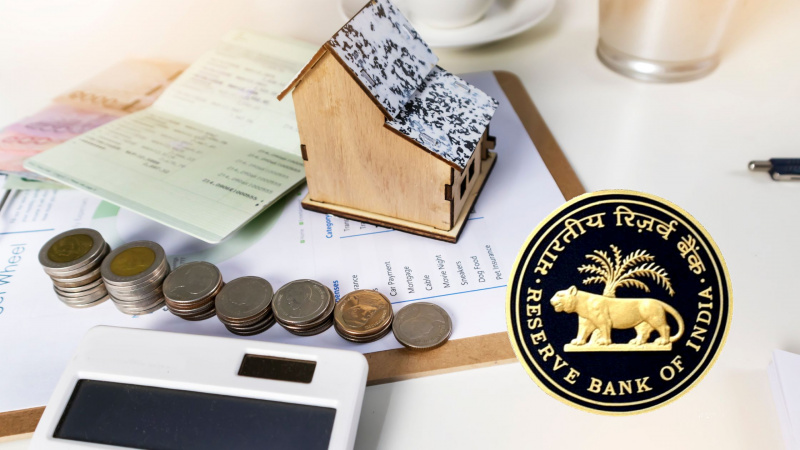Modi’s Diwali Gift: New GST Rates Slash Prices on Electronics, FMCG & More
What Has Changed in GST?At present, GST has four major slabs:GST SlabItems CoveredShare of RevenueNil (0%)Essential food items
- by Shan 2025-08-21 12:28:30
Air-conditioners, mobile devices, soaps - all consumer goods - and, unbelievably, even cement could soon cost less. What do we have to thank for all these cheap goods? Prime Minister Narendra Modi announced last Friday a complete overhaul of the Goods and Services Tax (GST), calling it a “Diwali gift” for citizens and businesses.
The proposed overhaul reduces the GST system to two tax slabs - 5% and 18% - effectively scrapping the current four-tier arrangement. Everyday essentials, like soaps, toothpaste, and snacks will move to the 5% slab. The big-ticket items, like air-conditioners, televisions, and cement, post a whopping "de-reclassifications" from 28% to 18%. Luxury goods and "sin" categories, like tobacco, will have a specially declared 40% rate.
However, cheaper consumer goods is a small transformation; this GST reform reflects a much larger transformation to a simpler and lighter tax system. This tax system will have implications for household budgets, industry and earnings margins, state revenues, and India’s inflation profile.
What Has Changed in GST?
At present, GST has four major slabs:
The new plan restructures this into two slabs:
5% rate: Will now catch most things from 12% rate.
18% rate: Will catch nearly 90% of items from 28% rate.
40% "sin tax" rate: Only for tobacco, some other luxury goods and online gambling.
Key takeaway: This is the biggest reshaping of GST since its launch in 2017.
What Will Get Cheaper for Consumers? Modi’s announcement was framed as a festive relief measure ahead of Diwali. Here’s a list of items expected to become cheaper: Toothpaste, soaps, shampoos, hair oil Packaged snack foods, processed foods, frozen vegetables Computers, mobiles, sewing machines, geysers Irrigators, non-electric water filter, iron, vacuum cleaner Ready-made garments more than ₹1000, footwear in the range of ₹500–₹1000 Ayurvedic medicines, vaccine, HIV/TB diagnostic tests Bicycles, stoves, cookware, utensils, barbecues Geometry kit, exercise books, maps, globes Solar water heater, agricultural machinery, public transport vehicles Cement and ready-mix concrete Air-conditioners, refrigerators, washing machines, TVs Aerated drinks, dishwashers, aircraft for personal use Car and motorcycle seats, railway AC units Printers, razors, dental floss, manicure kits Plastic products, tyres, aluminium foil, tempered glass Protein concentrates, sugar syrups, coffee concentrates Festive consumer impact: Families thinking about buying appliances such as AC's, or TV's this festive season may now see material savings. Not to mention, even when small-ticket items reduce in price, like snacks, soaps, and mobile phones it gives some immediate respite to middle-class households. Why Is the Government Revamping GST Now? The government currently earns 65% of GST revenue from the 18% slab. The higher 28% slab contributes just 11%. By merging slabs, the Centre hopes to: Simplify compliance for businesses, especially MSMEs. Boost consumption by lowering prices of daily-use goods. Reduce tax disputes caused by confusion between 12% and 18% rates. Project a consumer-friendly reform ahead of a festive season. Revenue Contribution by Current Slabs Key insight: The government is betting that increased consumption and a larger tax base will offset potential revenue losses from lower rates. What Did PM Modi Say? During his Independence Day address, Modi pitched the reform as a gift for every citizen: “This Diwali, I am going to make it a double Diwali for you. Citizens will receive a big gift… We are bringing next-generation GST reforms. This will reduce the tax burden across the country.” He also linked the reform to Atmanirbharta (self-reliance), suggesting that lower costs on essentials and electronics could support both consumers and domestic manufacturers. The Bigger Picture: GST 2.0 and Policy Implications While the festive cheer is obvious, experts caution that the move has deeper consequences: Direct savings on appliances, personal care, and daily essentials. Increased purchasing power during festive season sales. Simpler rate structure = easier compliance and fewer disputes. Lower rates on electronics and cement may stimulate demand. FMCG companies could pass on cost savings to consumers or improve margins. States rely heavily on GST revenue. Lower rates might reduce collections in the short term. Compensation from the Centre may become a sticking point in the GST Council. Cheaper essentials can soften consumer inflation in the near term. Boost in demand for housing and appliances may push industrial growth. But risk remains: if revenues drop, fiscal pressures could rise. Risks & Challenges Ahead While the reforms are consumer-friendly, challenges remain: Revenue Impact: Will higher consumption make up for the shortfall from lower GST rates? Luxury Tax Pushback: A 40% tax on “sin goods” and online gaming could face industry lobbying. State-Centre Dynamics: States may argue that revenue loss threatens their welfare spending. Implementation Hiccups: Businesses will need time to update billing software, pricing, and compliance systems. Expert view: Economists suggest that if implemented smoothly, the simplified structure could boost India’s Ease of Doing Business ranking and attract investors. But execution will be key. Consumer Guide: How Much Can You Save? Let’s look at sample savings under the new GST rates: Takeaway: For households upgrading appliances or renovating homes, the timing is ideal. For FMCG products, the savings may feel small individually but add up across monthly purchases. The government has framed this as a simplification and consumer relief measure, but the long-term success will depend on: Whether businesses actually pass on benefits to consumers. How states adjust to potential revenue dips. If compliance really becomes smoother for small businesses. Forward-looking insight: If the reform spurs consumption while keeping inflation in check, it could become a political and economic win. But if states struggle with revenue shortfalls, tensions in the GST Council may resurface. Key Takeaways GST simplified to 5% & 18% slabs — replacing 12% & 28%. Everyday items like soaps, snacks, mobiles move to 5%. Big-ticket items like ACs, cement, TVs drop to 18%. Luxury & sin goods taxed at 40%. Households benefit this Diwali with real price cuts. States may lose short-term revenue, raising fiscal concerns. Economists see this as a balancing act between simplification, affordability, and revenue stability. Final Word This Diwali represents more than just lights and sweets; for Indian consumers, it represents lighter bills. The new GST rates have put smiles on everybody's faces, from toothpaste to air-conditioners, as it will help lower household budgets and stimulate demand for the festive occasion. However, behind the shopping euphoria is more than just Diwali lights — it is a policy experiment. Will India keep its tax revenue while simplifying and being user-friendly? If successful, GST 2 will be able to finally deliver on its promises as a Good and Simple Tax.Products moving to 5% GST
Products moving to 18% GST (from 28%)
1. For Households
2. For Businesses & MSMEs
3. For State Governments
4. For Inflation & Economy
Looking Ahead: Will GST 2.0 Deliver?

POPULAR POSTS
GST 2.0 Rollout Begins: New 5% & 18% Tax Slabs, Cheaper Essentials, and Helpline 1915 Explain
by Shan, 2025-09-22 10:20:19
GST Overhaul Explained: New 5% and 18% Slabs, 40% Tax on Luxury Goods
by Shan, 2025-09-04 11:53:34
Jio Finance Launches Income Tax Filing at ₹24: How to File ITR Easily in 2025
by Shan, 2025-08-13 10:08:52
Income Tax Bill 2025: Lok Sabha Panel Backs Deductions for Late Filers
by Shan, 2025-07-22 12:28:58
Karnataka GST Crackdown: Why Shopkeepers Are Ditching UPI Payments
by Shan, 2025-07-16 12:14:56
GST Council Likely to Consider Lowering Tax on Online Food Delivery Fees
by B2B Desk, 2024-12-17 08:26:30
GST on Cigarettes, Tobacco, and Aerated Beverages Likely to Be Hiked: New 35% Slab Proposed
by B2B Desk, 2024-12-03 11:18:47
RECENTLY PUBLISHED

Loan EMIs to Drop as RBI Slashes Repo Rate - Full MPC December 2025 Highlights
- by Shan, 2025-12-05 11:49:44

Pine Labs IPO 2025: Listing Date, Grey Market Premium, and Expert Outlook
- by Shan, 2025-11-05 09:57:07

The Agentic Revolution: Why Salesforce Is Betting Its Future on AI Agents
- by Shan, 2025-11-05 10:29:23

Top 10 Insurance Companies in India 2026: Life, Health, and General Insurance Leaders Explained
- by Shan, 2025-10-30 10:06:42

OpenAI Offers ChatGPT Go Free in India: What’s Behind This Big AI Giveaway?
- by Shan, 2025-10-28 12:19:11

Best Silver Investment Platforms for 2025: From CFDs to Digital Vaults Explained
- by Shan, 2025-10-23 12:22:46




 Subscribe now
Subscribe now 